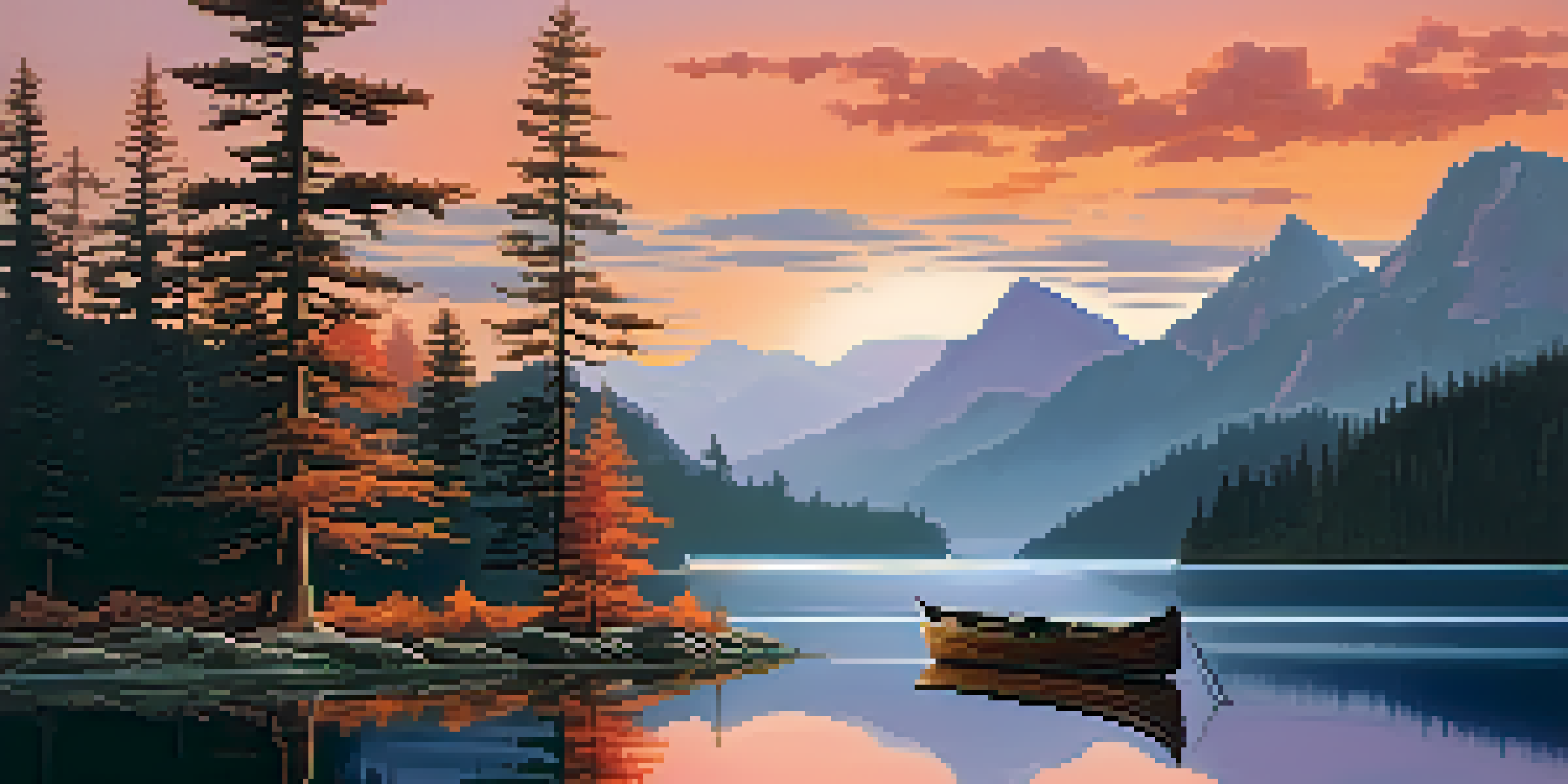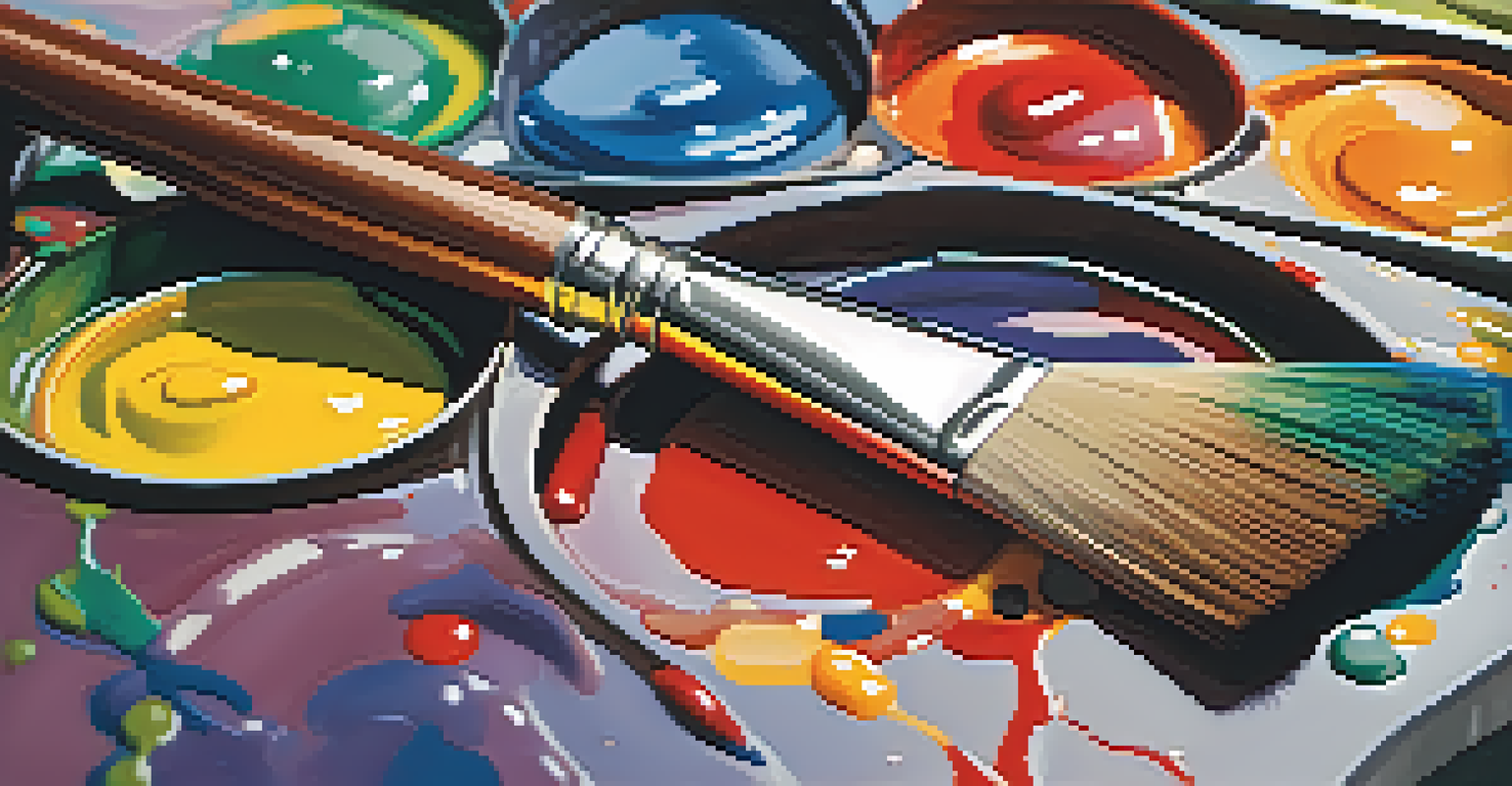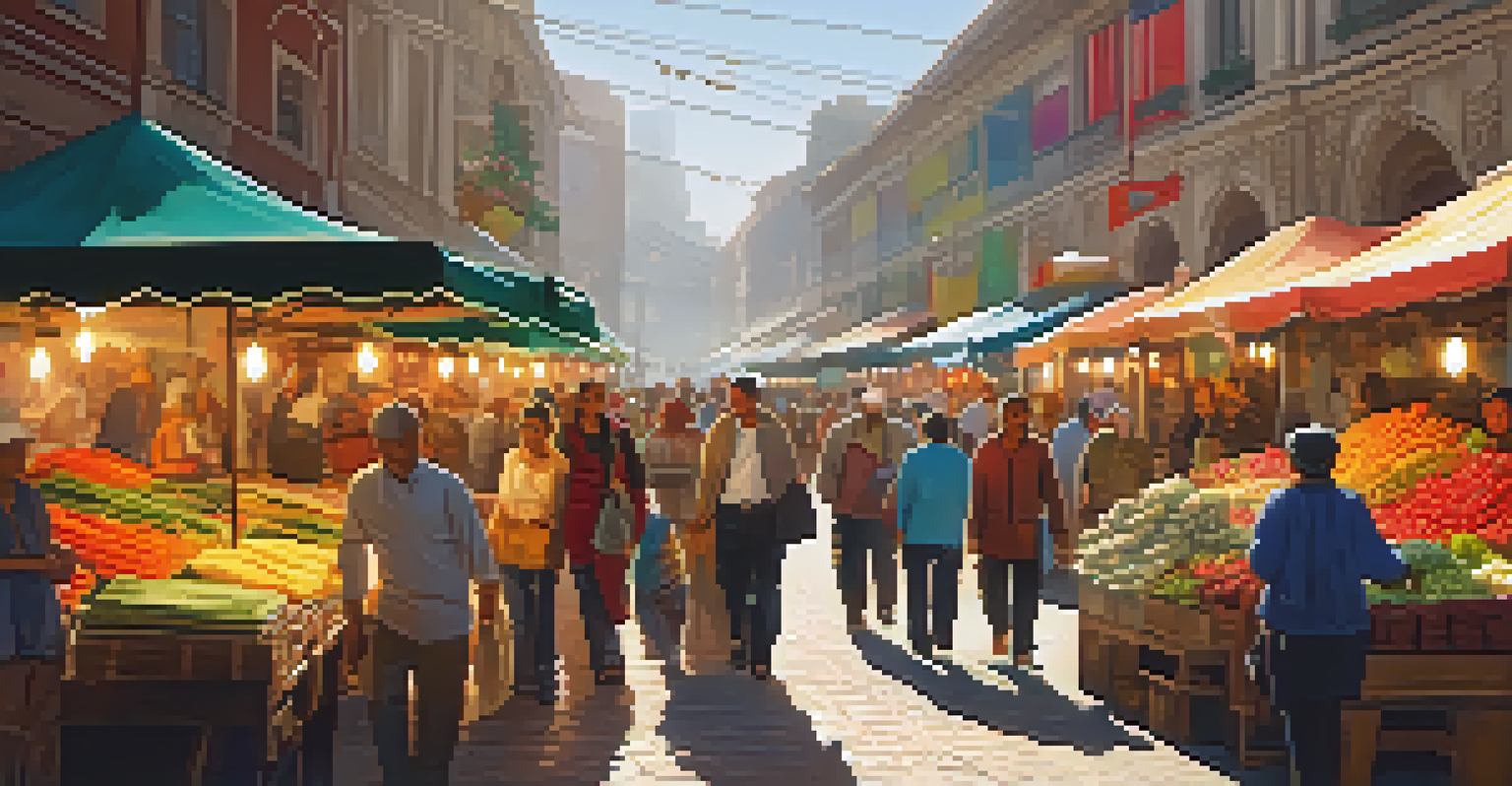The Relationship Between Visual Art and Narrative Structure

Understanding Visual Art in Storytelling
Visual art is more than just aesthetics; it's a powerful storyteller. Each brushstroke or sculpted line can evoke emotions and convey complex ideas, much like words do in a narrative. For instance, a painting may depict a scene filled with tension, drawing viewers into the moment and prompting them to imagine the story behind it.
Art is the most beautiful of all lies.
Art communicates themes and emotions that resonate deeply with audiences. Consider how an artist might use color and form to represent joy or despair, paralleling the emotional arcs found in literature. This synergy between visual elements and narrative themes enriches both forms of expression, allowing audiences to engage on multiple levels.
Ultimately, understanding visual art within storytelling invites us to see beyond the surface. Just as a writer carefully crafts a plot, artists layout visual narratives that invite interpretation and provoke thought, creating a dialogue between the viewer and the artwork.
The Elements of Narrative Structure
Narrative structure is the framework that shapes a story, often comprising elements like exposition, rising action, climax, and resolution. These components guide the audience through the unfolding plot, creating an engaging experience. Just as a roadmap helps us navigate a journey, narrative structure leads readers and viewers alike through the twists and turns of a story.

In visual art, similar principles can be observed. For example, the placement of focal points and the progression of scenes can mirror the narrative arc. An artist might use perspective to create tension, just as a writer might build suspense through pacing and plot twists, effectively guiding the viewer's emotional journey.
Art as a Narrative Tool
Visual art serves as a powerful storyteller, using elements like color and composition to evoke emotions and convey complex ideas.
Both visual art and narrative rely on conflict and resolution to captivate their audience. Whether through a dramatic shift in color or a climactic scene in a novel, the interplay of these elements engages viewers and readers, drawing them into a shared experience that transcends the boundaries of medium.
Symbolism: A Bridge Between Art and Narrative
Symbolism plays a crucial role in both visual art and narrative structure, serving as a bridge between the two. Artists often incorporate symbols to convey deeper meanings and emotions, much like writers use metaphors and motifs to enrich their storytelling. For instance, a red rose in a painting might symbolize love, paralleling how it could represent romance in literature.
Storytelling is the most powerful way to put ideas into the world today.
This shared language of symbolism allows for a multi-layered interpretation of both art forms. When viewers recognize symbols within a visual piece, they can draw parallels to narratives they know, enriching their understanding and emotional connection. Just as a well-placed motif can enhance a story, effective symbolism in art can elevate its impact.
By exploring these symbols, audiences can uncover hidden narratives within visual art. This exploration encourages a deeper interaction with the piece, prompting discussions about the artist's intent and the stories that emerge from their work, proving that art and narrative can coexist harmoniously.
Visual Storytelling Techniques in Art
Visual storytelling techniques, such as composition, color theory, and perspective, are integral to both art and narrative. Artists use these methods to guide the viewer's eye and create a sense of movement, much like a writer uses pacing to propel the story forward. For example, a chaotic scene in a painting can evoke urgency, mirroring a thrilling chase in a novel.
These storytelling techniques not only establish mood and tone but also enhance the audience's emotional engagement. A warm color palette can evoke feelings of comfort, while stark contrasts might signal conflict, paralleling how narrative choices impact reader emotions. Both artists and writers strive to elicit a visceral reaction from their audience, making the experience memorable.
Symbolism Enhances Understanding
The use of symbolism in both art and narrative allows for deeper interpretation, enriching the audience's emotional connection to the work.
Moreover, understanding these techniques allows us to appreciate the artistry behind visual narratives. Just as a skilled writer crafts sentences to build tension, a talented artist uses visual elements to create depth and complexity, reminding us that storytelling can take many forms.
Character Development in Visual Art
Character development is a cornerstone of narrative structure, and it can also be found in visual art. Artists often portray characters with distinct traits and emotions, inviting viewers to connect with them on a personal level. For example, the expressions on a character's face can convey a whole range of emotions, much like a character's dialogue reveals their personality in a story.
Through visual cues, artists provide insights into their characters' backgrounds and motivations. Just as writers develop characters through backstory and internal conflict, visual artists might use clothing, posture, or even surroundings to hint at a character's journey. This depth encourages viewers to engage with the artwork and ponder the story behind the image.
Ultimately, character development in visual art parallels that of narrative, inviting audiences to explore deeper themes of identity and growth. Both forms of storytelling emphasize the human experience, encouraging empathy and understanding through relatable characters.
The Role of Emotion in Art and Narrative
Emotion is the heartbeat of both visual art and narrative structure, driving engagement and connection. Artists and writers alike strive to evoke feelings that resonate with their audience, whether it's joy, sadness, or nostalgia. A powerful painting can stir emotions similar to a poignant passage in a novel, creating an unforgettable experience.
Through color, brushwork, and composition, artists can manipulate emotions in ways that parallel a writer’s choice of words. For instance, dark hues can evoke feelings of despair, much like a tragic narrative pulls at our heartstrings. This shared goal of emotional resonance reminds us that both art and narrative seek to capture the complexities of human experience.
Cultural Interplay of Art and Literature
The relationship between visual art and literature reflects broader cultural narratives, showcasing how these forms influence and inspire each other.
Moreover, exploring emotion in both mediums deepens our appreciation for storytelling. By recognizing how feelings are conveyed visually and textually, we can better understand the artist's and writer's intentions, fostering a greater connection to their work.
The Interplay of Art and Literature in Culture
The relationship between visual art and narrative structure also reflects the broader cultural context in which they exist. Throughout history, art and literature have influenced one another, shaping societal values and perspectives. For instance, the Romantic movement in literature paralleled the emphasis on emotion and nature in visual art, demonstrating how these mediums can mirror cultural sentiments.
This interplay enriches our understanding of both forms, encouraging cross-disciplinary exploration. Artists might draw inspiration from literary works, while writers could find visual elements that spark their creativity. This symbiotic relationship allows for innovative storytelling that transcends traditional boundaries, inviting audiences to experience narratives in diverse ways.

Ultimately, recognizing this connection enhances our appreciation for the arts. By exploring how visual art and narrative structure inform each other, we gain insights into the cultural narratives that shape our world, reminding us that storytelling is a universal human endeavor.